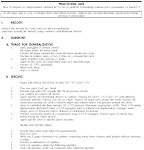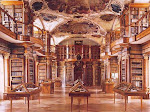Wednesday, October 29, 2008
A Music Mentor?
There is an interesting parallel between mentoring and success. Teaching can be done (and somewhat effectively) without much mentoring, but learning and wanting to continually progress cannot exist without mentoring.
As a mentor, we must do everything with the attitude of leading by example. Telling someone to do something we personally would not do or have not done in a while or at all, but think is a good idea for those we mentor is a false form of teaching. We are telling those we mentor that we want them to do as we say and not as we do. We convey the attitude that we may have learned this skill or performed this technique when we were younger, but no longer feel the need to continue because we perfectly demonstrate that we are textbook teachers in word only and not doers (this of course does not apply if we are not physically capable of doing what we did when we were younger because of physical limitations with our bodies).
As mentors, we must use every means available - both conventional and non-conventional - to make a difference in the lives of the individuals we mentor. We must be examples and role models not only in what we say, but also in what we do. We must push those we mentor to continually be better, do more, learn more, try more, and even fail more (yes, I said fail more).
People are too afraid of failure. It prohibits them from progressing because the fear of failure prevents them from being productive. It instigates procrastination because, as a whole, we would rather continually put off what we fear doing and do nothing than fail or appear to be less than perfect in any area. We value our performance and fear giving a less than perfect performance regardless of what it is, or is not. Failure is merely a stepping stone to success - a way to turn our failures into strengths.
As mentors we must also not be afraid to show those we mentor our weaknesses and our limitations. We must not convey the perception of perfection because even though we mentor others, we are not true mentors unless we are learning and being mentored by our own mentors in the process.
Being a mentor is life changing. Those who have been mentored realize the importance of mentoring. We must think of ourselves as a teacher regardless of what we teach. A coach views himself or herself as someone who coaches an individual or a team to focus on the main objective (playing the game and winning). As mentors, we help those we mentor focus on playing the game of life. We may use our talent or mastery of a particular instrument as a means to help them, but we are giving them much more than a musical talent. We may say we are piano teachers, voice teachers, violin teachers, guitar teachers, and any other "instrument" teacher available, but we do not merely teach them how to play an instrument. We teach discipline, self mastery, practice habits, conditioning, dedication, goal setting and achieving, determination, confidence, strength training, optimism, perseverance, self worth, and every other worthy and uplifting attitude and aptitude. We are helping them be the very best they can be. We use an instrument as our vehicle to help them master a skill, develop a talent, and get in touch with their musical side.
Written by Jerald M. Simon
Copyright © 2008 Music Motivation®
All Rights Reserved
Theory Tip - Pentascales
 The next pentascale I will describe is the minor pentascale. This pentascale is created using the first five notes from the major scale (as with the major pentascale), but the third note (in the key of C it would be E) is flatted as if you were playing the minor chord. If you play the five notes of the C minor pentascale you will play C D Eb (E flat) F G. A good way to practice this pentascale is to play the minor chord (C Eb G) then play the minor pentascale going up and down and play the minor chord again. This can be done in every key. Here is what the C minor pentascale looks like in music:
The next pentascale I will describe is the minor pentascale. This pentascale is created using the first five notes from the major scale (as with the major pentascale), but the third note (in the key of C it would be E) is flatted as if you were playing the minor chord. If you play the five notes of the C minor pentascale you will play C D Eb (E flat) F G. A good way to practice this pentascale is to play the minor chord (C Eb G) then play the minor pentascale going up and down and play the minor chord again. This can be done in every key. Here is what the C minor pentascale looks like in music:
The next pentascale I will describe is the diminished pentascale. This pentascale is created using the notes from the diminished chord. If you play the five notes of the C diminished pentascale, you will play C D Eb (E flat) F Gb (G flat). A good way to practice this pentascale is to play the diminished chord (C Eb Gb), then play the diminished pentascale going up and down and play the diminished chord again. This can be done in every key. Here is what the C diminished pentascale looks like in music:

The next pentascale I will describe is not necessarily a true pentascale, but I enjoy teaching it to music students (and they love playing around with it). This is the pentascale comprised of the first 5 notes from the blues scale. The C blues scale is C Eb F F# G Bb C. If you play the first five notes of the blues scale you will play C Eb (E flat) F F# G. A good way to practice this pentascale is to play the C minor chord (C Eb G) but play it using the fingering 1 2 5 (1 = C, 2 = Eb, 5 = G) then simply add the F (with the 3rd finger) and the F# (with the 4th finger). This can be done in every key. Here is what the pentascale comprised of the first 5 notes from the blues scale looks like in music:

Tuesday, October 28, 2008
Fun Ways to Motivate Young Musicians
2. Help them learn upbeat well-known fun songs they think are cool (ask them what they want to play, they'll tell you).
3. Encourage them to attend a symphony, ballet, musical, concert, etc.
4. Watch 'music movies' with them so the young musicians can visually see someone acting like the composer or professional musician.
5. Have them draw a picture about every piece they play.
6. Have them create a comic book about the music they are playing or would like to play.
7. Teach younger musicians how to write their own music and have them tell you what it reminds them of and why they wanted to write it.
8. Ask them to be an assistant teacher and help the teacher teach someone who is even younger than they are (teachers do learn the most).
9. Have a piano pizza party or any other themed instrument party.
10. Ask older music students to do duets with the younger musicians (preferably fun jazz pieces or upbeat and exciting songs).
11. If you can, have college aged students perform and teach about their instrument(s) for high school students, have high school aged students perform for jr. high aged students, and jr. high aged students can perform for elementary aged students (when younger musicians see older musicians who are somewhat close to their own age performing and get to meet with them personally - they look up to them and want to do what they see the more advanced students doing).
12. Film the students playing and make a "music video" of the students playing their instrument.
13. Record a CD of the students playing their instrument.
14. Do workshops with the students. Have them be a guest presenter (once they have mastered a specific technique, scale, or chord) and show the rest of the music students.
15. Ask them to enter local talent competitions
16. If they like sports have them create a song using the athletes stats on the back of the card.
17. Use the computer for games on music.
18. Have the students create mini-plays about the different composers. Have them assume the role as the composers and act like the composer (maybe pretending to write a certain song or a certain event from the composers life).
Written by Jerald M. Simon
Copyright © 2008 Music Motivation®
All Rights Reserved
Monday, October 27, 2008
Playin' Around and The Jazz Song
(to purchase the book visit your local music store or order on-line at www.musicmotivation.com – if your local music store is not yet carrying Music Motivation® products they may contact my company to begin selling our products in their stores).
The Jazz Song is a jazz piano solo that teaches students how to play a walking bass pattern with the left hand while the right hand plays major blues scales with sixth and seventh chords. Both are upbeat and fun jazz pieces to challenge the students and let them have fun playing around at the piano." I wrote this book to help the intermediate level piano students learn the theory of Jazz music. Students learn how to create sixth and seventh chords and how to play them as blocked and broken chords. A combination of 6th and 7th chords are used to create several left hand walking bass patterns.
The entire book is designed to motivate teenagers (especially boys), their teachers and even adults to learn the theory of Jazz music. Visit the Music Motivation® website (www.musicmotivation.com) to view sample pages from the book and read more about it. You may also listen to each of the songs on the website as well.
Written by Jerald M. Simon
Copyright © 2008 Music Motivation®
All Rights Reserved
Variations on Mary Had a Little Lamb
(to purchase the book visit your local music store or order on-line at www.musicmotivation.com – if your local music store is not yet carrying Music Motivation® products they may contact my company to begin selling our products in their stores.)
"Variations on Mary Had a Little Lamb" is the first book in the Innovative Improvisation™ series. In the book are nine arrangements by Jerald M. Simon of the song Mary Had a Little Lamb. Each one teaches different music styles and how to apply them to other songs. The arrangements are: the original "Mary Had a Little Lamb", "Mary Took Her Lamb to a Swingin' Jazz Club", "Mary's Lamb Had the Blues", "Mary Took Her Lamb to a 50's Rock Concert", "Mary and Her Lamb Live With Indians", "Mary's Lamb Starred in a Western", "Mary and Her Lamb Dance the Waltz", "Mary's Lamb Meets Mozart", and "Mary Took Her Lamb to a Funeral".
I wrote this book to help piano students (especially younger students) learn how to improvise or change the style and rhythm of a well known song. Each variation teaches students patterns to be played with the left hand which change the style of the music. Once these left hand patterns are learned, students can apply what they have learned to other songs. It is a fun way to help children get excited about playing the piano. Children know the familiar tune and enjoy changing it around and playing arrangements.
I have done several workshops and music camps for piano teachers and their students and every time I do students amaze me. I have had several students take the variations on Mary Had a Little Lamb to the next level and begin creating their own arrangements because of the left hand patterns they learn in the book. One student came to one of the music camps I did and said, “Listen to this…I can play Mary was abducted by Aliens”. He then played an arrangement he had done on his own that sounded like Mary had been abducted by aliens. It was wonderful because he used his creativity to play around at the piano (which motivated him to want to try new variations and other arrangements on his own). It is wonderful.
The entire book is designed to motivate children, teachers, and even adults to play around with songs and learn how to improvise at the piano. Visit the Music Motivation® website (www.musicmotivation.com) to view sample pages from the book and read more about it. You may also listen to each of the variations on the website as well.
Copyright © 2008 Music Motivation®
All Rights Reserved
An Introduction to Scales and Modes
“An Introduction to Scales and Modes”, helps students learn the scales and modes according to the circle of 5ths. Students learn each of the seven primary modes (Ionian, Dorian, Phrygian, Lydian, Mixolydian, Aeolian, and Locrian) in every key signature following the circle of fifths. In addition, the modes are presented in two ways: (1) Going in order beginning with each mode in the respective key signature (i.e. – C Ionian, D Dorian, E Phrygian, etc.) and (2) Going in order using the tonic (the note after which the key signature is named) of the respective key signature for each mode (i.e. – C Ionian, C Dorian, C Phrygian, etc.).
I wrote this book to help students learn the primary scales and modes in every key. All scales are created from combining two tetrachords and playing them one after another. A tetrachord is a series of 4 notes in alphabetical order (such as C, D, E, F) and follow a pattern of a Whole Step (the distance between the 1st and 2nd notes), another Whole Step (the distance between the 2nd and 3rd notes), and a Half Step (the distance between the 3rd and 4th notes). A half step is the distance from any black or white key to the very next key to the right (up above) or to the left (down below) with no key in between (i.e. C to C sharp). A whole step is equal to two half steps (i.e. C to D). This means there is a key on the piano in between the first and second notes.
The C major scale is created by combining the C tetrachord (C, D, E, and F) with the G tetrachord (G, A, B, and C). If it were written out letter by letter it would look like this:
C D E F G A B C
Notice how the scale begins and ends on C. This is the C major scale. This is what it looks like in music:
The entire book is designed to show all of the scales and modes in every key. I wanted to simplify explanations and help students learn the scales and modes in an easy to follow format that helps them remember the patterns and feel comfortable playing them. Visit the Music Motivation® website (www.musicmotivation.com) to view the book and read more about it.
Written by Jerald M. Simon
Copyright © 2008 Music Motivation®
All Rights Reserved






.jpg)

+latest+and+greatest+flattened+(smaller+size)+rgb+mode.jpg)
.jpg)








+latest+and+greatest+flattened+(smaller+size)+rgb+mode.jpg)
.jpg)






































.jpg)